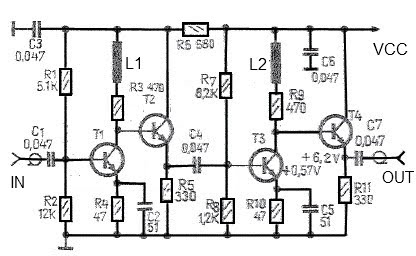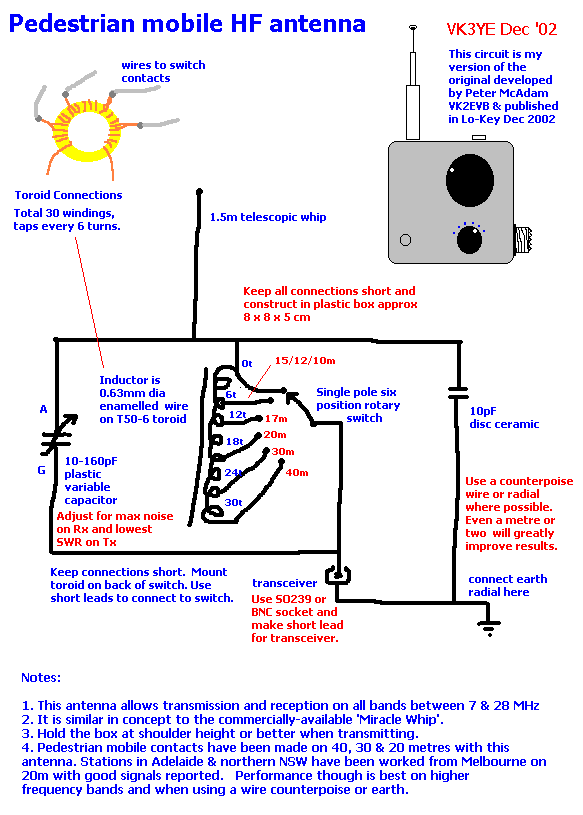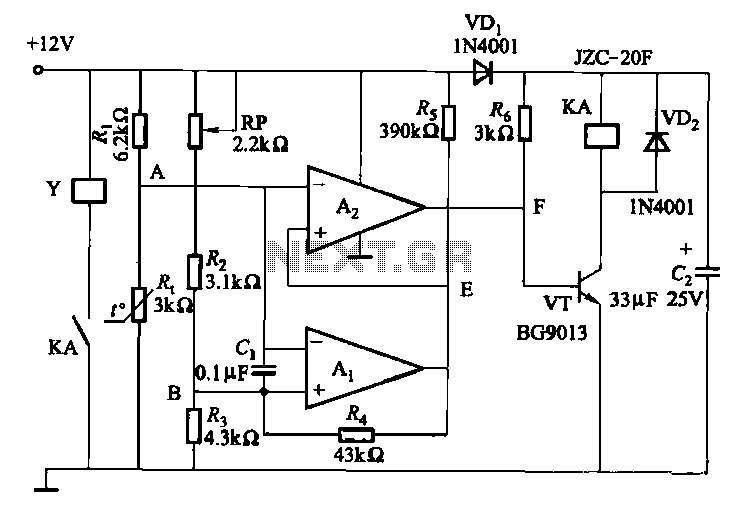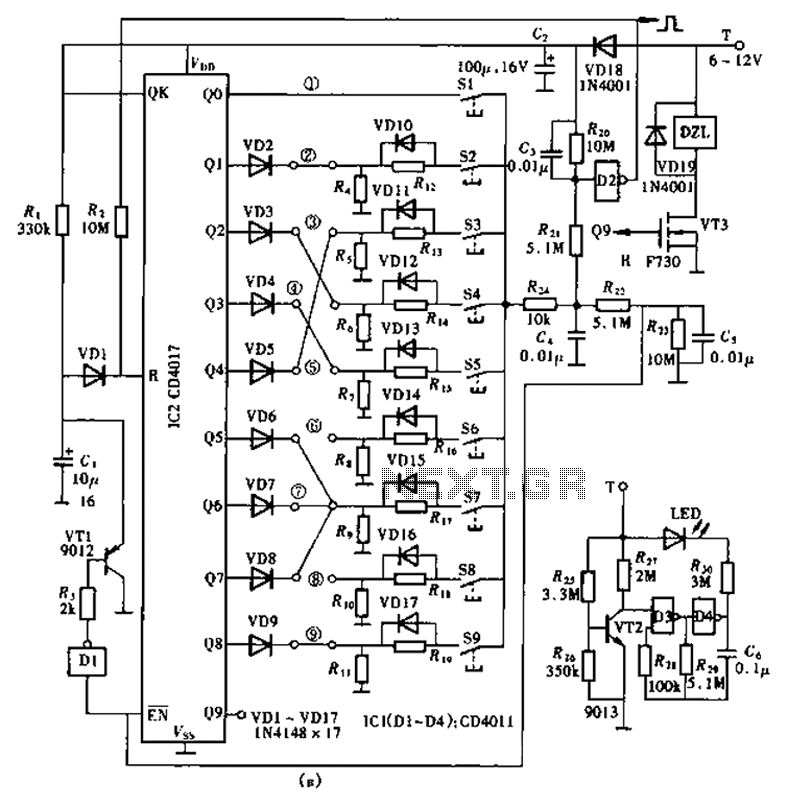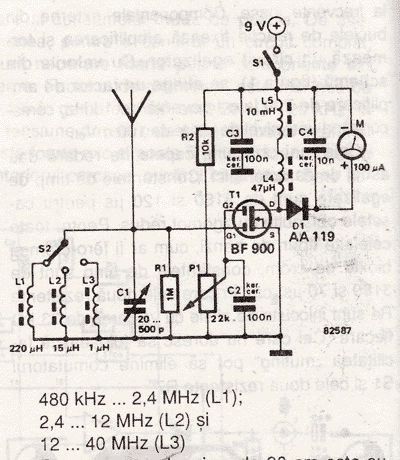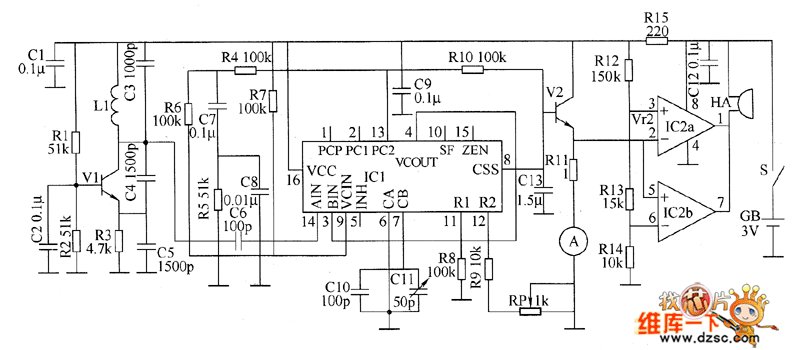
The FSK signal demodulation circuit composed of the digital phase-lock
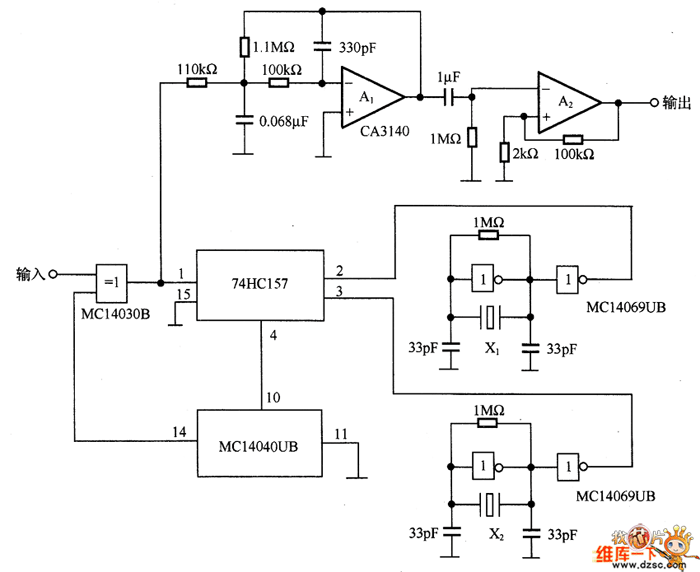
Figure 7-2 illustrates the FSK (Frequency Shift Keying) signal demodulation circuit, which is built using a digital phase-locked loop. This circuit features two oscillators operating at distinct frequencies: crystal oscillator X with a frequency of 983.04 kHz and crystal oscillator X2 with a frequency of 1.2288 MHz. The oscillator X2 includes a frequency conversion circuit using the 74HC157 and a frequency splitting circuit.
The FSK demodulation circuit is designed to recover the original data signal from an FSK-modulated carrier wave. The digital phase-locked loop (PLL) serves as the core component of the demodulation process, providing synchronization between the input signal and the local oscillator. The two crystal oscillators, X and X2, generate stable reference frequencies that are essential for accurate demodulation.
In this configuration, the crystal oscillator X operates at a lower frequency of 983.04 kHz, while the higher frequency oscillator X2 at 1.2288 MHz allows for the effective shifting of the carrier frequency. The 74HC157, a quad 2-input multiplexer, is utilized for frequency conversion, enabling the selection of the appropriate frequency for demodulation based on the input signal characteristics. The frequency splitting circuit further divides the output frequency to facilitate the processing of the FSK signal.
Overall, the combination of these components within the circuit ensures precise demodulation of the FSK signal, allowing for reliable data recovery. The design emphasizes stability and accuracy, making it suitable for various communication applications where FSK modulation is employed.In Figure 7-2 is the FSK signal demodulation circuit composed of the digital phase-lock. The circuit consists of 2 oscillators with different frequencies, i.e crystal oscillators X (the frequency is 983.04KHz) and X2 (the frequency is 1.2288MHz) compose the oscillator, and X2 consists of the frequency converting circuit 74HC157, frequency splitting circuit.. 🔗 External reference
The FSK demodulation circuit is designed to recover the original data signal from an FSK-modulated carrier wave. The digital phase-locked loop (PLL) serves as the core component of the demodulation process, providing synchronization between the input signal and the local oscillator. The two crystal oscillators, X and X2, generate stable reference frequencies that are essential for accurate demodulation.
In this configuration, the crystal oscillator X operates at a lower frequency of 983.04 kHz, while the higher frequency oscillator X2 at 1.2288 MHz allows for the effective shifting of the carrier frequency. The 74HC157, a quad 2-input multiplexer, is utilized for frequency conversion, enabling the selection of the appropriate frequency for demodulation based on the input signal characteristics. The frequency splitting circuit further divides the output frequency to facilitate the processing of the FSK signal.
Overall, the combination of these components within the circuit ensures precise demodulation of the FSK signal, allowing for reliable data recovery. The design emphasizes stability and accuracy, making it suitable for various communication applications where FSK modulation is employed.In Figure 7-2 is the FSK signal demodulation circuit composed of the digital phase-lock. The circuit consists of 2 oscillators with different frequencies, i.e crystal oscillators X (the frequency is 983.04KHz) and X2 (the frequency is 1.2288MHz) compose the oscillator, and X2 consists of the frequency converting circuit 74HC157, frequency splitting circuit.. 🔗 External reference
